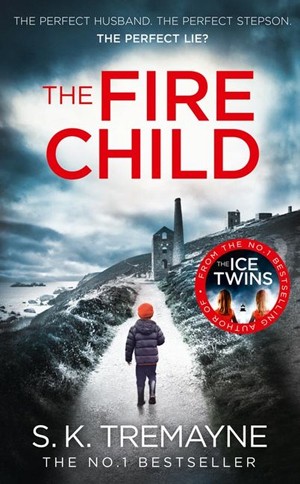
Into this idyll steps newlywed Rachel Kerthen. The contrast between the run-down council flats in South East London where she was brought up, to a run-down stately home where she now finds herself in charge of renovations couldn’t be more stark but Rachel is confident she is up to the mammoth task ahead. How quickly that optimistic outlook begins to cloud…
Husband David is a widower, and his first wife, Nina, died in tragic circumstances just 18 months ago, falling down one of the many mineshafts that litter the Carnhallow Estate, which has been in the family for centuries. Her body was never recovered, and that fact seems to haunt Rachel’s young stepson, Jamie, a sensitive child who becomes increasingly more troubled as the story progresses.
While Rachel is haunted by the spectre of Nina, who had started the renovation work at Carnhallow before she died and whose presence lurks it every room, Jamie seems convinced that his mother is communicating with him. Cue some seriously strange conversations between Rachel and her stepson, which leave her shaken up and beginning to doubt recent decisions. Marry in haste, repent at leisure as the saying goes.
As the darkness of the tale deepens, an increasingly unhinged Rachel becomes an ever more unreliable narrator. Can we trust her version of events? And what black secrets are hidden in her lowly, underprivileged past? Secrets run through this tale like a seam of tin under the Cornish landscape upon which it is played out. For there’s something mighty unnerving about how Nina died (or then again, did she die at all?) and the still grieving David definitely knows more than he is letting on. Then there’s his mother, in the early stages of dementia, who lives in a cottage on the estate and shares the hired help with Rachel. In her lucid moments, Juliet appears to be trying to tell her daughter-in-law something, but it is a version of events worth consideration?
I loved Tremayne’s debut, The Ice Twins, and there are elements of this book that remind me of that cracking novel, not least the lovingly excited, boldly drawn, dramatic setting and the deeply disturbed child at the heart of everything that is going on. Sadly, it also reminds me of other stories too with Daphne du Maurier’s Rebecca in pole position. And that’s a pity, because this author has an original voice which rang loud and true in The Ice Twins but somehow, it appears muffled and off key here.
The Cornish landscape and haunting (or is it haunted?) house loom large throughout. Cornwall certainly seems to be a setting of choice for crime writers these days and in The Fire Child it is the wild coastline which is the focus. There are darkly beautiful old photographs of historic Cornish mining scenes dotted between chapters and although I tended to skip past them, they conjure up vivid images of the now defunct tin mining industry, which moulded the fictional Carnhallow Estate, lives on in through the derelict mine buildings.
A book of contrasts, then; there are times when you’ll be pulled in completely, caught up in the murky depths of the drama that unfolds. But the finale is disappointing, almost as if the author ran out of ideas and decided to go for the easy (and wholly implausible) option. I love a good twist – and sadly, this doesn’t have one.
For more moody Cornish mysteries, try Hard Light by Elizabeth Hand or In Her Wake by Amanda Jennings. There’s also SK Tremayne’s dubut, The Ice Twins, and the upcoming novel Undertow by Elizabeth Heathcote.
HarperCollins
Print/Kindle/iBook
£6.00
CFL Rating: 3 Stars